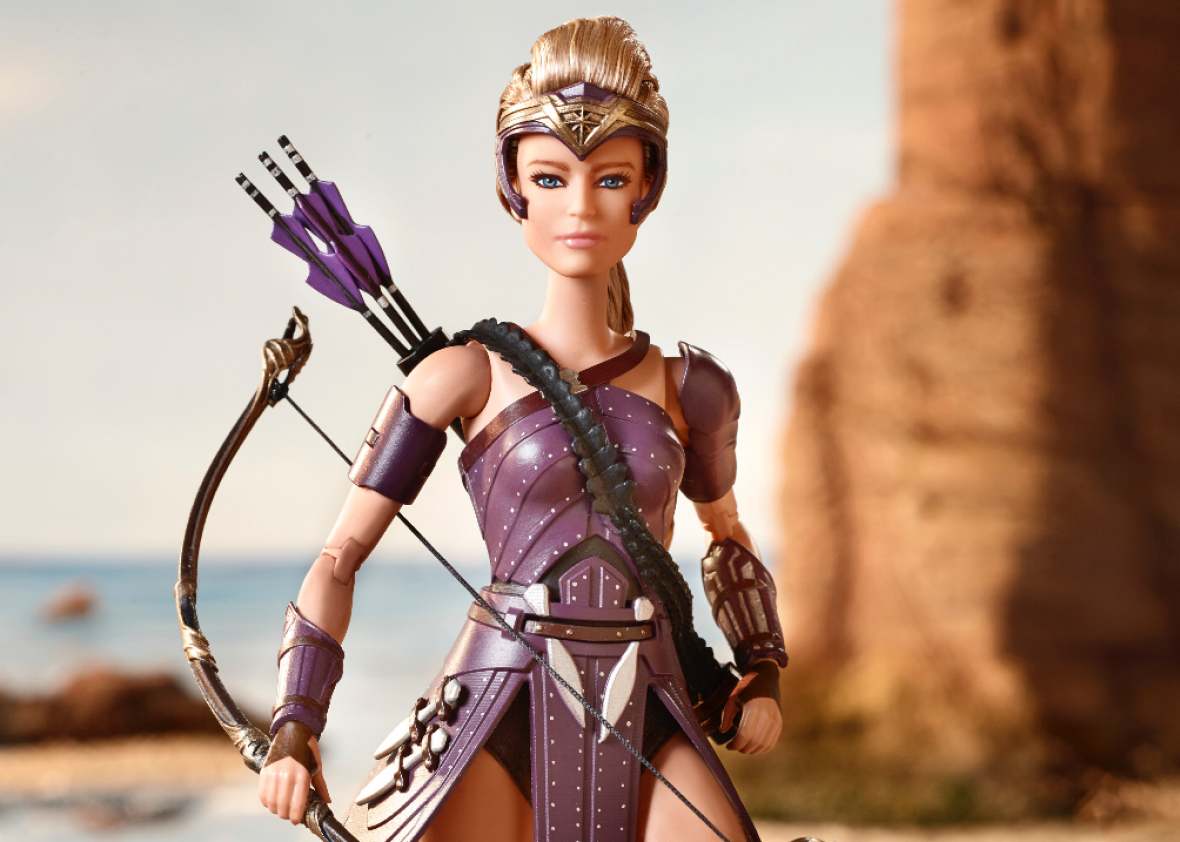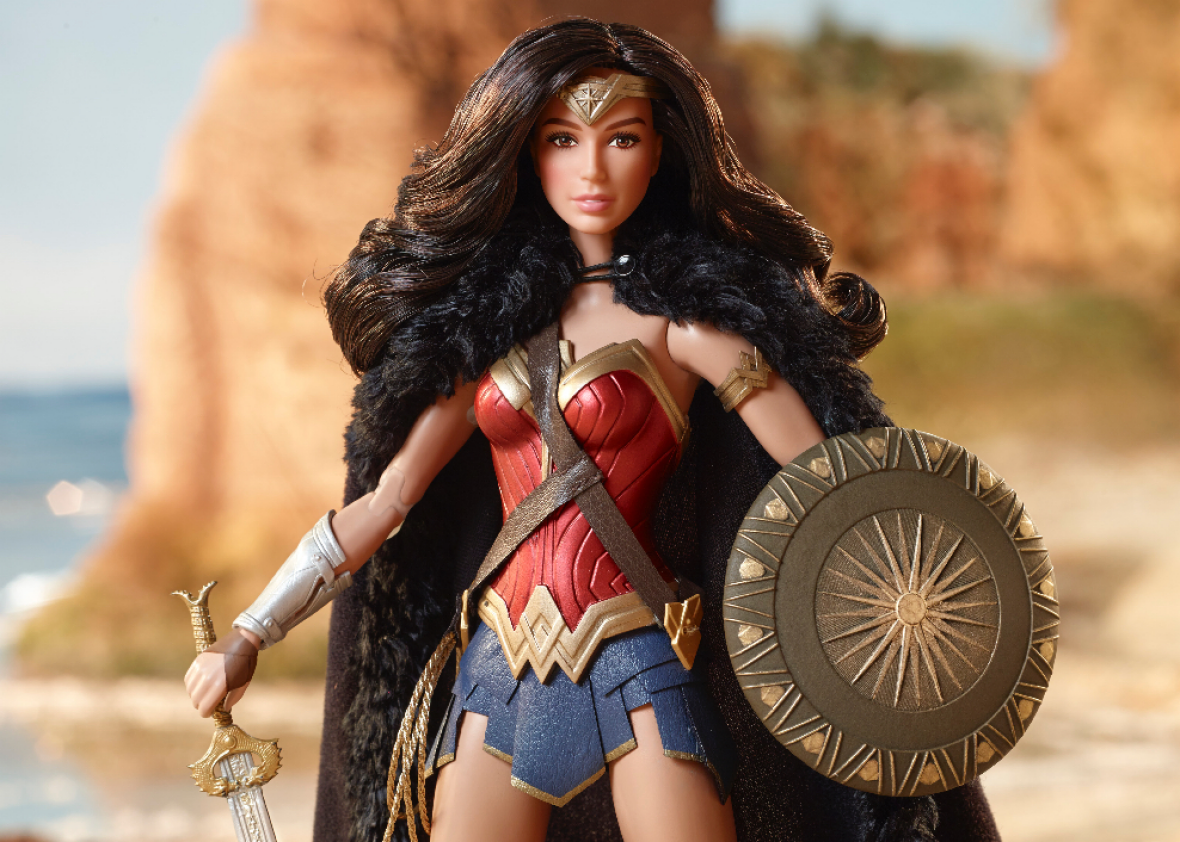In Wonder Woman, Diana, an Amazonian warrior, leaves her secluded island to aid humankind and learns firsthand how confining the trappings of femininity can be. When she tries out early-20th-century womenswear, she quickly realizes that petticoats and heeled booties are not compatible with flying jumps and swordplay.
The Barbie versions of the princess of Themyscira have had similar problems. With emaciated limbs and preposterously arched feet, Wonder Woman Barbie cannot stand on her own, let alone fight off bad guys. But the newest version of the doll, released in the promotional run-up to the new movie, almost lets Diana come into her own.
The first Wonder Woman doll, released in 2000, is essentially a pageant queen doing cosplay. She has a wasp waist and legs that look like they’ve been put on backward. None of her limbs bend, and she sports some very 1980s blue eyeshadow and an intense application of lip liner. The version that followed in 2003 was less dramatically femme but even spindlier than her predecessor. In 2008, Wonder Woman Barbie gained posable elbows and wrists but took a step back with a radically made-up, coquettish face.
Finally, in 2016, when Wonder Woman first appeared on the silver screen in Batman v Superman: Dawn of Justice, the doll improved by leaps and bounds.* She had what Mattel described as a fully articulated body for “high-action poses.” Both her arms and knees were designed to bend, which created a huge improvement in the range of motion from the traditional Barbie. She also had clear muscle definition in her quads and biceps and natural-looking hair and makeup.
The newest collection, released alongside the Wonder Woman film, uses the same emancipated form and also includes Barbie versions of fellow Amazons Hippolyta and Antiope, who have similarly sinewy, articulated bodies and exciting getups. Hippolyta sports a fierce, fur-collared cloak, and Antiope has a dynamic armored look in an attractive shade of purple. In addition to the regular Wonder Woman doll, there is also a Paradise Island Wonder Woman, based on the film’s early setting in Themyscira. This doll is accompanied by a Steve Trevor Ken doll who seems like a bit of an afterthought, dressed in an ill-fitting flight suit and sporting stubble that looks like a skin condition.

Mattel
The new doll’s costumes are sexy but still practical for a superhero’s daily needs. She wears a bustier-style top with a chest belt, the use of which is not immediately apparent but seems handy. Her skirt is certainly short and flirty but also looks roomy enough to run in, and the platform on her gladiator sandals features a comfort heel.
The progress of the new Wonder Woman Barbies stems in part from what Mattel calls a “Gal Gadot face sculpt,” which is an unnecessarily creepy way of saying she’s designed to look like the actress.
Prior to Gadot, the last on-screen Wonder Woman was Lynda Carter, from the 1970s TV show. A pageant queen who won Miss World America in 1972, Carter had an hourglass form and a sweet, feminine face. Though the Barbie released in 2000 probably wasn’t made to look specifically like her, Carter still represented Wonder Woman in the popular imagination. Gadot, on the other hand, has a strong face and evident musculature and is styled with natural-looking hair and makeup.
The feminist success of the Wonder Woman Barbie is similar to that of the movie, which is to say, a qualified success. It’s exciting to see a pop culture depiction of a woman who has agency, but both Barbies and blockbusters are unlikely to be truly revolutionary. Mattel would be likely to give even an Imperator Furiosa Barbie a 22-inch waist and pointy stilettos. We will have to wait a while longer for a female superhero doll designed to stand on her own two feet.
*Correction, June 28, 2017: This post originally misstated the name of the movie Batman v Superman: Dawn of Justice.
